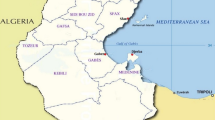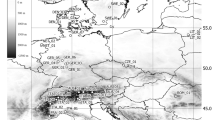Abstract
The pinewood nematode Bursaphelenchus xylophilus is the causative agent of pine wilt disease, which has caused heavy economic losses to the South Korean forest industry. In this study, we investigated the genetic variation among South Korean pinewood nematodes using newly developed microsatellite loci. In order to ensure sufficient templates for the amplification of multiple loci required for individual identification, we employed an amplifying step of restricted fragments during the microsatellite development procedure. We found atypical genetic patterns in this non-native pest species: high allelic diversity and population structure. The large number of alleles may be the result of continuous and/or large-scaled introduction, which apparently went unnoticed before the first official report of pine wilt disease in Korea in 1998, or may come from gene pools of closely related species through genetic introgression after hybridization. Ecological properties of this species, such as a vector-mediated life cycle, may have contributed to its population structure, which may be enhanced by governmental efforts to prevent dispersal of this disease. As a geographic population structure was not observed, geographic patterns of genetic variation appear to be more affected by anthropogenic mediation than by natural dispersion through vector insects. And genotypes of Korean populations were compared to genotypes found in neighboring countries such as China and Japan.
Similar content being viewed by others
References
Ayoub SM (1977) Plant nematology: an agricultural training aid. Department of Food and Agriculture, Division of Plant Industry, Sacramento, 195 pp.
Baliraine FN, Bonizzoni M, Osir EO, Lux SA, Mulaa FJ, Zheng L, Gomulski LM, Gasperi G and Malacrida AR (2003) Comparative analysis of microsatellite loci in four fruit fly species of the Genus Ceratitis (Diptera: Tephritidae). B. Entomol. Res. 93: 1–10.
Barrett LG, Thrall PH, Burdon JJ and Linde CC (2008) Life history determines genetic structure and evolutionary potential of host-parasite interaction. Trends Ecol. Evol. 23: 678–685.
Cheng HR (1983) The occurrence of a pine wilting disease caused by nematode found in Nanjing. For. Pest Dis. 4: 1–5.
Cheng XY, Cheng FX, Xu RM and Xie BY (2008) Genetic variation in the invasive process of Bursaphelenchus xylophilus (Aphelenchida: Aphelenchoididae) and its possible spread routes in China. Heredity 100: 356–365.
De Guiran G and Bruguier N (1989) Hybridization and phylogeny of the pine wood nematode (Bursaphelenchus Spp.). Paratologica 35: 321–330.
Excoffier L, Laval G and Schneider S (2005) Arlequin ver. 3.0: An integrated software package for population genetics data analysis. Evol. Bioinform. Online 1: 47–50.
Hammond RL, Saccheri IJ, Ciofi C, Coote T, Funk SM, McMillan WO, Bayes MK, Taylor E and Bruford MW (1998) Isolation of microsatellite markers in animals. In Molecular Tools for Screening Biodiversity, A. Karp, P. G. Isaac and D. S. Ingram, eds., Chapman & Hall, Weinheim, Germany, pp. 279–285.
Huelsenbeck JP and Andolfatto P (2007) Inference of population structure under a Dirichlet process model. Genetics 175: 1787–1802.
Jarne P and Lagoda PJL (1996) Microsatellites, from molecules to populations and back. Trends Ecol. Evol. 11: 424–429.
Jones JT, Moens M, Mota M, Li H and Kikuchi T (2008) Bursaphelenchus xylophilus: opportunities in comparative genomics and molecular host-parasite interactions. Mol. Plant Pathol. 9: 357–368.
Jung J, Han H, Ryu SH and Kim W (2010) AFLP (amalified fragment length polymorphism) analysis and genetic variation of pinewood nematode, Bursaphelenchus xylophilus in South Korea. Anim. Cells Syst. (in press).
Jung J, Lee E and Kim W (2006) Isolation and characterization of polymorphic microsatellite markers of Anopheles sinensis, a malaria vector mosquito in the East Asia region. Mol. Ecol. Notes 6: 1272–1274.
Jung J, Lee E and Kim W (2007) Isolation and characterization of polymorphic trinucleotide microsatellites of the polyploid crucian carp (Carassius auratus). Mol. Ecol. Notes 7: 124–126.
Kanzaki N and Futai K (2002) A PCR primer set for determination of phylogenetic relationships of Bursaphelenchus species within the xylophilus group. Nematology 4: 35–41.
Mamiya Y (1972) Pinewood nematode, Bursaphelenchus lignicolus Mamiya and Kiyohara, as causal agent of pine wilting disease, Rev. Plant Prot. Res. 5: 46–60.
Mamiya Y (1988) History of pine wilt disease in Japan. J. Nematol. 20: 219–226.
Mamiya Y and Enda N (1972) Transmission of Bursaphelenchus lignicolus (Nematoda: Aphelenchoididae) by Monochamus alternatus (Coleoptera: Cerambycidae). Nematologica 18: 159–162.
Mota MM, Braasch H, Bravo MA, Penas AC, Burgermeister W, Metge K and Sousa E (1999) First report of Bursaphelenchus xylophilus in Portugal and in Europe. Nematology 1: 727–734.
Raymond M and Rousette F (1995) GENEPOP (version 1.2): population genetics software for exact tests and ecumenicism. J. Hered. 86: 248–249.
Rozen S and Skaletsky HJ (2000) PRIMER 3 on the www for general users and for biologist programmer. In Bioinformatics Methods and Protocols: Methods in Molecular Biology, S. Krawetz and S. Misener, eds., Human Press, Totowa, NJ, pp. 365–386.
Sakai AK, Allendorf FW, Holt JS, Lodge DM, Molofsky J and With KA (2001) The population biology of invasive species. Annu. Rev. Ecol. Syst. 32: 305–332.
Selkoe KA and Toonen RJ (2006) Microsatellites for ecologists: a practical guide to using and evaluating microsatellite markers. Ecol. Lett. 9: 615–629.
Shin S and Han H (2006) Current status on research and management of pine wilt disease in Korea. In Proceedings of the international symposium on current status on research & management of pine wilt disease, pp. 31–44.
Steiner G and Buhrer EM (1934) Aphelenchoides xylophilus n. sp., a nematode associated with blue-stain and other fungi in timber. J. Agric. Res. 48: 946–951.
Takemoto S and Futai K (2007) Polymorphism of Japanese isolates of the pinewood nematode, Bursaphelenchus xylophilus (Aphelenchida: Aphelenchoididae), at heat-shock protein 70A locus and the field detection of polymorphic populations. App. Entomol. Zool. 42: 247–253.
Tamura K, Dudley J, Nei M and Kumar S (2007) MEGA4: molecular evolutionary genetics analysis (MEGA) software version 4.0. Mol. Biol. Evol. 24: 1596–1599.
Tsutsui ND, Suarez AV, Holway DA and Case TJ (2000) Reduced genetic variation and the success of an invasive species. Proc. Natl. Acad. Sci. USA 97: 5948–5953.
Tzean S and Jan S (1985) The occurrence of pine wood nematode, Bursaphelenchus xylophilus, in Taiwan. Proceedings of the 6th ROC symposium of electron microscopy, pp. 38–39 (Abstr.).
Weir BS and Cockerham CC (1984) Estimating F-statistics for the analysis of population structure. Evolution 38: 1358–1370.
Ye W, Giblin-Davis RM, Braasch H, Morris K and Thomas WK (2007) Phylogenetic relationships among Bursaphelenchus species (Nematoda: Parasitaphelenchidae) inferred from nuclear ribosomal and mitochondrial DNA sequence data. Mol. Phylogenet. Evol. 43: 1185–1197.
Yi C, Byun B, Park J, Yang S and Chang K (1989) First finding of the pinewood nematode, Bursaphelenchus xylophilus (Steiner Buhrer) Nickle and its insect vector in Korea. Res. Rep. For. Res. Ins. Seoul 38: 141–149.
Yu H, Frommer M, Robson MK, Meats AW, Shearman DCA and Sved JA (2001) Microsatellite analysis of the Queensland fruit fly Bactrocera tryoni (Diptera: Tephritidae) indicates spatial structuring: implications for population control. B. Entomol. Res. 91: 139–147.
Zhou Z, Sakaue D, Wu B and Hogetsu T (2007) Genetic structure of populations of the pinewood nematode Bursaphelenchus xylophilus, the pathogen of pine wilt disease, between and within pine forests. Phytopathology 97: 304–310.
Zidana H, Turner GF, Van Oosterhout and Hänfling B (2009) Elevated mtDNA diversity in introduced populations of Cynotilapia afra (Günther 1894) in Lake Malawi National Park is evidence for multiple source populations and hybridization. Mol. Ecol. 18: 4380–4389.
Author information
Authors and Affiliations
Corresponding author
Rights and permissions
About this article
Cite this article
Jung, J., Han, H., Ryu, S.H. et al. Microsatellite variation in the pinewood nematode, Bursaphelenchus xylophilus (Steiner and Buhrer) Nickle in South Korea. Genes Genom 32, 151–158 (2010). https://doi.org/10.1007/s13258-009-0842-7
Received:
Accepted:
Published:
Issue Date:
DOI: https://doi.org/10.1007/s13258-009-0842-7




